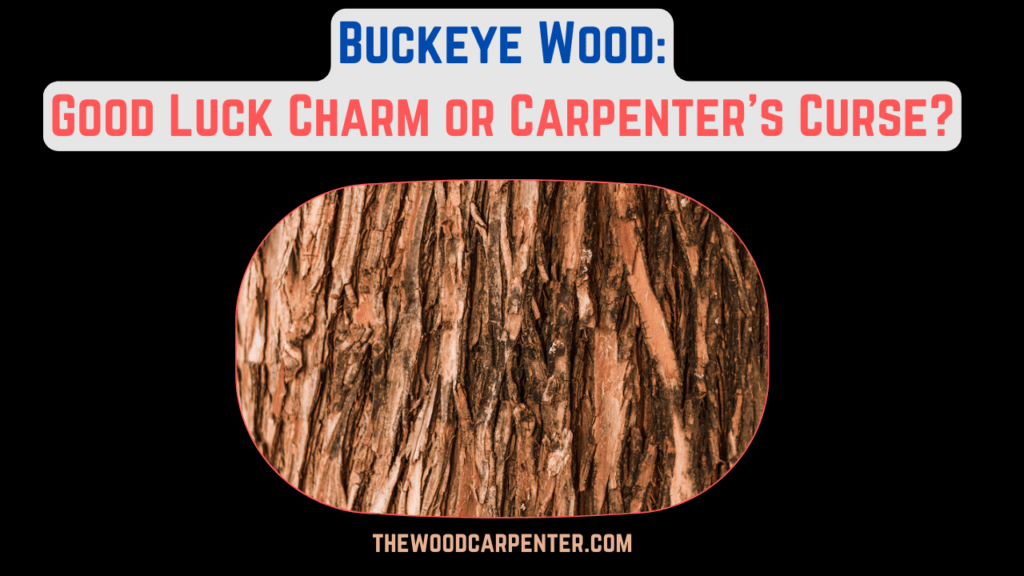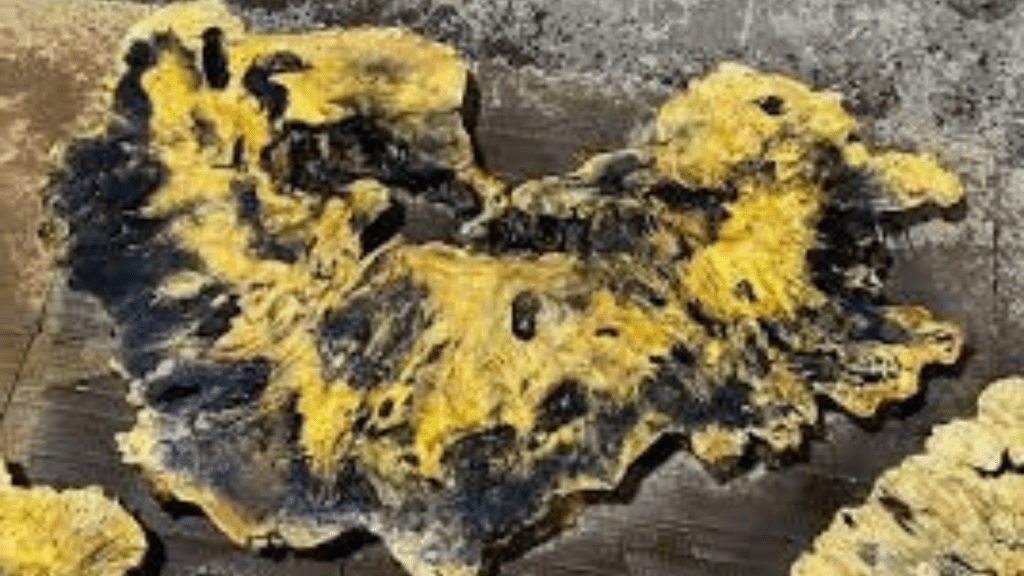
Buckeye wood comes from the buckeye tree (genus Aesculus), a unique hardwood that grows in North America. Known for its distinctive nuts and beautiful spring flowers, the tree also produces soft, light wood with a few practical uses. In this article, we will explore the features, uses, and disadvantages of buckeye wood.
What is Buckeye Tree Wood ?
Buckeye tree wood comes from the Ohio buckeye, a medium-sized tree found in the Midwest and eastern United States. The tree usually grows between 50 and 75 feet tall and has a trunk that is 1 to 1.5 feet wide.
The wood is very light, weighing only about 32.5 lbs per cubic foot (520 kg per cubic meter) when dried, which makes it one of the lightest hardwoods in North America.
Physical Properties of Buckeye tree Wood
Color and Appearance
Heartwood: Creamy white to light yellow, often with grayish streaks
Sapwood: White, not sharply separated from the heartwood
Buckeye burl: Features dramatic swirls, reddish-brown knots, and dark gray to black discolorations, prized for decorative work.
Grain and Texture
Fine, even texture
Generally straight grain, sometimes slightly interlocked
Diffuse-porous with very small, numerous vessels
Strength and Workability
- Very low density and strength, similar to aspen or basswood
- Janka hardness: 770 lbf (3,430 N), making it relatively soft among hardwoods
- Glues and finishes well, but the low density can lead to fuzzy surfaces when machined
- Rated good for turning, but low in shaping and boring
- Poor steam bending properties.
Durability
- Poor resistance to decay; rated as non-durable to perishable
- Not suitable for outdoor or structural use
Odor
Fresh buckeye tree wood can have an unpleasant odor, which dissipates as it dries.
Common Uses of Buckeye Wood
Despite its softness and low strength, buckeye tree wood has found several practical and artistic uses:
Carving and Whittling: Its light weight and fine texture make it ideal for carving, whittling, and crafting utensils.
Utility Wood: Used for boxes, crates, low-strength pallets, and concealed parts in furniture.
Specialty Items: The highly figured buckeye tree burl is sought after for electric guitar tops, pen blanks, knife handles, and other small turned objects.
Prosthetic Limbs: Historically favored for prosthetics due to its lightness and ease of shaping.
Pulpwood: Sometimes used in the production of pulp for paper.
Paint-Grade Molding: Suitable for moldings that will be painted rather than stained.

Fun Facts About Buckeye
- The Ohio buckeye is the state tree of Ohio, and its name comes from the tree’s nut, which resembles a deer’s eye.
- While the seeds are toxic to humans and livestock, squirrels can eat the insides, which are sweeter than sucrose.
- Buckeye tree wood’s unique appearance, especially in burl form, makes it a favorite among woodturners and custom instrument makers
Buckeye Wood vs. Similar Species
| Feature | Buckeye Wood | Aspen/Basswood | Yellow Poplar |
| Density | Very low | Very low | Low to moderate |
| Workability | Easy, but fuzzy | Easy | Easy |
| Decay Resistance | Poor | Poor | Moderate |
| Common Uses | Carving, utility | Carving, utility | Furniture, utility |
| Specialty Appeal | Buckeye burl valued | Limited | Less decorative |
Disadvantages of Buckeye Wood
Low Strength and Softness
- Buckeye tree wood is among the softest and weakest of all hardwoods, with mechanical properties and density similar to basswood and aspen. This makes it unsuitable for structural or load-bearing applications and limits its use primarily to utility or specialty items.
- Its softness also means the wood is easily dented, scratched, or damaged during handling or use.
Poor Decay Resistance
Buckeye tree wood has no natural resistance to decay and is rated as non-durable to perishable. It deteriorates rapidly when exposed to moisture or outdoor conditions, making it a poor choice for exterior projects or environments prone to rot.
Workability Issues
- While generally easy to work, the low density of buckeye wood often results in fuzzy surfaces after machining, requiring extra sanding to achieve a smooth finish.
- It is rated very low in shaping and boring, and is one of the poorest woods for steam bending, limiting its versatility in woodworking.
- The wood can be difficult to dry without considerable warping and twisting.
Susceptibility to Staining and Defects
- Buckeye tree’s sapwood stains easily, often turning a dark blue-black due to blue stain fungi if not processed quickly after cutting.
- Buckeye burl, while visually striking, frequently contains voids, bark inclusions, and other defects that can complicate milling and finishing. Large, defect-free pieces are rare, and much of the material is wasted during processing.
Limited Commercial Value
The wood is seldom cut for grade lumber and is generally mixed with low-value species in the market. Its commercial applications are mostly limited to low-strength pallets, crates, concealed furniture parts, or pulpwood.
Unpleasant Odor
Fresh buckeye wood can emit an unpleasant odor, which has led to nicknames like “stinking buckeye.” The smell dissipates as the wood dries but can be off-putting during processing.
Toxicity
All parts of the buckeye tree, including the wood, leaves, and bark, are toxic if ingested by humans or livestock, which is a consideration for certain applications.
Also read:
Bubinga Wood: 10 Must-Know Facts!
Cumaru Wood: Uses, Drawbacks & Comparisons
Padauk Wood: Types, Uses & Care
FAQ’s
1. What is buckeye wood?
A soft, lightweight hardwood from the buckeye tree, mostly found in the US.
2. What does it look like?
Usually pale yellow or white. Buckeye burl has cool swirls and blue-black streaks.
3. Is it good for furniture?
Not really. It’s too soft and dents easily, so it’s not used for strong furniture.
4. What is buckeye wood used for?
- Carving and crafts
- Pen blanks and knife handles
- Decorative items
- Sometimes for boxes or crates
5. Is it durable?
No. It rots easily and isn’t good for outdoor use.
6. Why do people like buckeye burl?
It has unique, beautiful patterns perfect for art, turning, and custom projects.
7. Is buckeye wood toxic?
Yes. All parts of the tree are toxic if eaten.
8. Can I plant a buckeye tree?
Yes! They grow well in gardens and have pretty flowers.
9. Does it help wildlife?
The flowers attract bees and butterflies, but the seeds are toxic to most animals.

